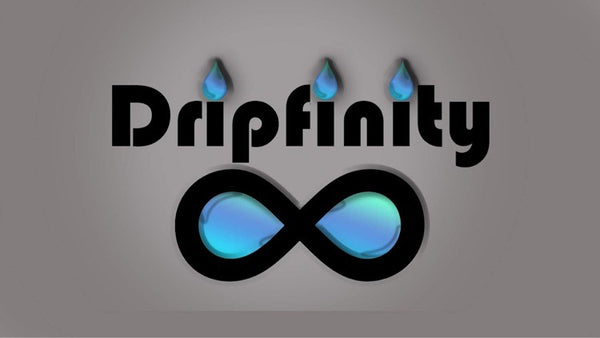The Artist Within: Exploring AI-Generated Art in Ecommerce
Art, in all its forms, has captivated and stirred human emotions for centuries. From the intricate paintings of Van Gogh to the avant-garde sculptures of Picasso, art has served as a medium for self-expression, cultural reflection, and creative exploration. But what happens when the artist is not human? In the advent of Artificial Intelligence (AI), we are witnessing a new era in art creation – AI-generated art. As ecommerce continues to evolve, integrating AI-generated art into the digital space has opened a plethora of possibilities, challenging the boundaries of creativity and transforming the way we appreciate and consume art.
The Rise of AI-Generated Art
With the advancement of AI technology, algorithms can now analyze patterns, colors, and forms to create original art pieces. These algorithms, known as Generative Adversarial Networks (GANs), consist of two neural networks - a generator and a discriminator. The generator creates art by constantly learning and improving from the feedback received from the discriminator, which acts as a critic. This dynamic process evolves the generator's abilities, leading to the creation of increasingly sophisticated and visually stunning artworks.
This rise of AI-generated art has sparked debate within the art community. Some argue that AI cannot truly replicate the human creativity and emotion that artists bring to their work. Others, however, see it as a new medium for artists to explore, collaborating with AI algorithms to push the boundaries of their own creativity. Regardless of the perspective, AI-generated art has undeniably carved its place in the art world, raising questions about the definition of art, authorship, and artistic expression.
The Intersection of AI-Generated Art and Ecommerce
As ecommerce continues to dominate the retail industry, the integration of AI-generated art presents new opportunities for artists and art enthusiasts. The vast reach and accessibility of online platforms allow artists to showcase and sell their AI-generated pieces to a global audience. Online marketplaces, like Dripfinity Immersive Art, provide a space for artists to monetize their creations through the sale of prints and other merchandise. Through print-on-demand services, art lovers can now adorn their homes with unique AI-generated pieces, offering a fresh and modern aesthetic.
Furthermore, AI technology can enhance the personalization and recommendation systems of ecommerce platforms. By analyzing user preferences and purchase history, AI algorithms can curate customized art recommendations, introducing viewers to new artists and styles they may not have discovered otherwise. This intersection of AI-generated art and ecommerce creates a symbiotic relationship, supporting artists in reaching a broader audience while offering consumers a unique and tailored art buying experience.
The Future of AI-Generated Art in Ecommerce
As AI technology continues to advance rapidly, the future of AI-generated art in ecommerce holds immense potential. Innovations such as WondrAI are already revolutionizing the way artists create and market their work. WondrAI's AI-powered tools enable artists to effortlessly generate high-quality art pieces, saving time and expanding their creative possibilities. This streamlined process not only benefits individual artists but also opens doors for ecommerce platforms to offer a wider variety of AI-generated art to their customers.
Additionally, as AI algorithms continue to develop, they have the potential to learn and adapt to individual customers' preferences with greater accuracy. This level of personalization can revolutionize the online art-buying experience, creating a curated journey for each viewer. From AI-powered art recommendations to virtual reality simulations of artwork in home settings, AI technology is set to transform the way we engage with and purchase art online.
The Ethical Implications and Controversies
The integration of AI-generated art in ecommerce also raises ethical considerations. One of the key concerns is the issue of attribution and ownership. Who is the rightful author of an AI-generated artwork? Should credit be given to the algorithm or the artist who initiated and trained it? These questions challenge the traditional notions of authorship and intellectual property rights, leading to a debate that will no doubt continue as AI-generated art becomes more prevalent.
Another ethical concern revolves around the impact of AI on the livelihood of traditional artists. As AI-generated art gains popularity and recognition, there is a fear that it may devalue the work of human artists, leading to a decline in opportunities and revenue. Striking a balance between AI-generated art and traditional art forms will be crucial in ensuring the preservation and appreciation of both.
The Marriage of Art and Artificial Intelligence
AI-generated art in ecommerce has undoubtedly proven to be a groundbreaking development, pushing the boundaries of human creativity and transforming the way we appreciate and consume art. As technology advances, the symbiotic relationship between AI-generated art and ecommerce holds immense potential, offering artists new avenues for exposure and revenue, while providing art lovers with unique and personalized experiences.
Whether you are a traditionalist or an avid supporter of AI-generated art, it is undeniable that the marriage of art and artificial intelligence is here to stay. So, dive into the world of AI-generated art, explore platforms like Dripfinity Immersive Art, and witness the fascinating marriage of algorithms and human creativity. The artist within awaits!
Explore the breathtaking AI-generated artworks at Dripfinity Immersive Art. Unleash your creativity with WondrAI's AI-powered tools and embark on a journey of artistic exploration like never before!

